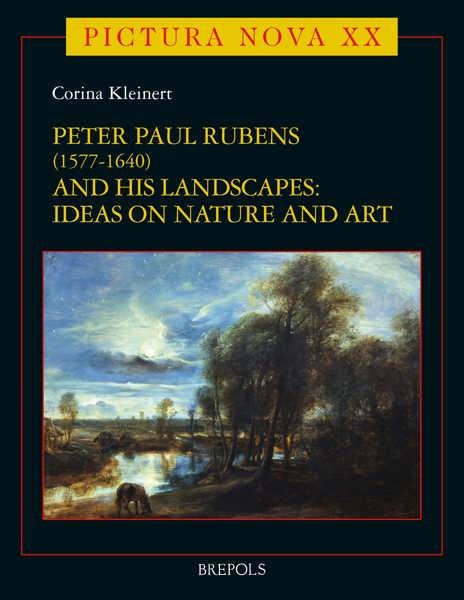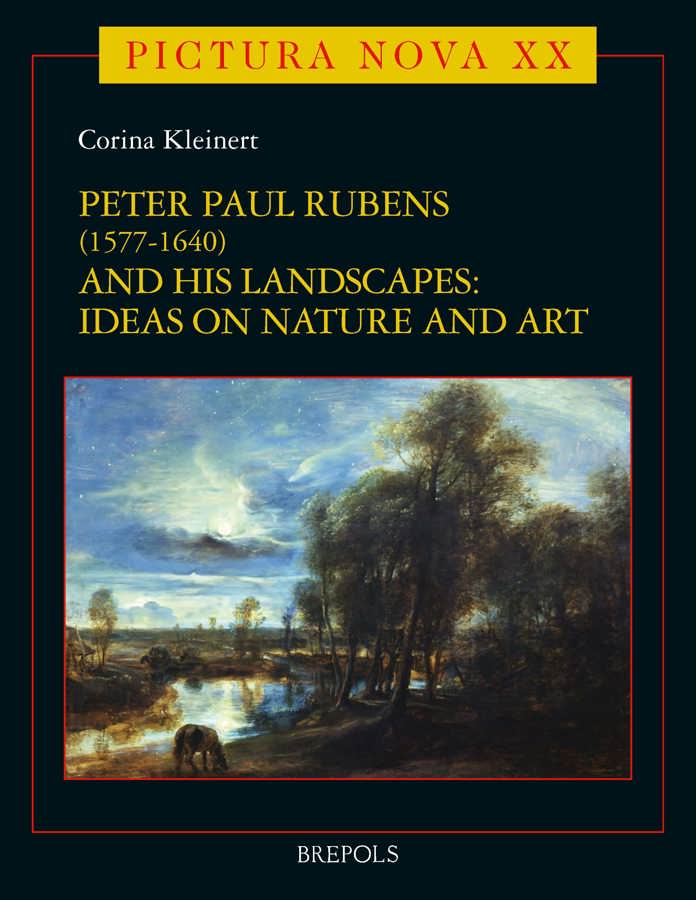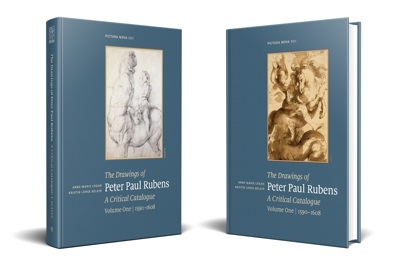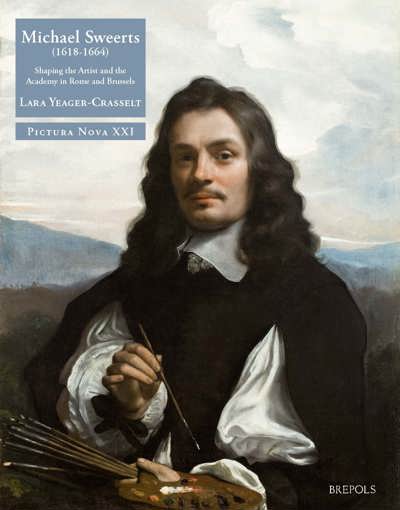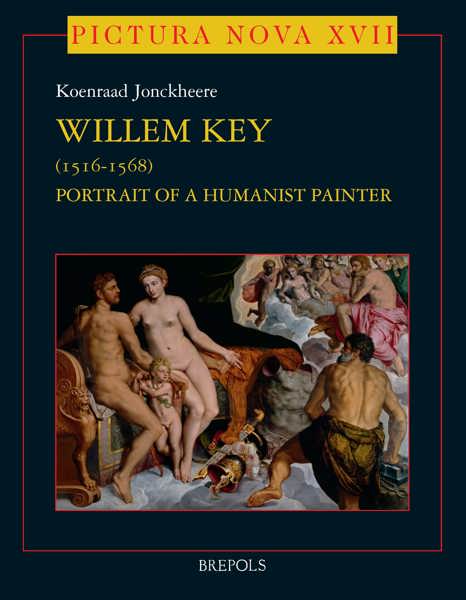
Peter Paul Rubens (1577-1640) and His Landscapes: Ideas on Nature and Art
Corina Kleinert
- Pages: 397 p.
- Size:190 x 250 mm
- Illustrations:220 b/w, 31 col.
- Language(s):English
- Publication Year:2014
- € 145,00 EXCL. VAT RETAIL PRICE
- ISBN: 978-2-503-55038-1
- Hardback
- Available
To grasp the profoundly personal character of Rubens’s landscapes, this book considers the artist’s highly complex method of pictorial invention to illuminate the perception, implementation, dissemination, and posthumous reception of views on nature and landscape as depicted in Rubens’s landscape art.
"This heavily illustrated book is a useful resource for those studying the engraved series, as the numerous details offer the reader the opportunity to appreciate Bolswert's signature style. (...) As a synthetic view of Rubens as a landscapist, however, this investigation offers insight into the motivations and visual language employed by the artist to achieve his artistic universality." (Jacquelin N. Coutré, in: Renaissance Quarterly, 69, 2016, p. 247-248)
"This well designed and handsomely produced book on Rubens’s landscapes brings together ideas that have clearly been developed over a number of years of thinking and research." (Aneta Georgievska-Shine, in: HNA Reviews, March 2016)
Painting landscapes was very much a private activity for Peter Paul Rubens. Whilst the majority of his other works were commissioned, the landscapes seem to have been painted for his own pleasure and delight and stayed in the artist’s possession until his death. Most of them were painted in the last decade of his life; a happy period, in which Rubens retired from public duties and spent most of his free time studying the antique and enjoying sojourns on his country estate, castle Het Steen.
To grasp this profoundly personal character of Rubens’s landscapes, this book considers the artist’s highly complex method of pictorial invention to illuminate the perception, implementation, dissemination, and posthumous reception of views on nature and landscape as depicted in Rubens’s landscape art.
By investigating contemporary notions on the changing perception of nature and landscape in late 16th and early 17th-century southern Netherlandish culture, Rubens’s position within this socio-cultural matrix will be established, thus shedding new light on the artist’s own perception of nature and landscape. The re-assessment of the influence of classical and contemporary ideas about nature and landscape, as well as Rubens’s personal sense of place, will illuminate important characteristics which further define Rubens’s ideas about nature implemented in his landscape art. Also, fresh light will be cast on the sudden promulgation and dissemination of Rubens’s apparently private views on nature and landscape through a novel examination of the print series of the Small and Large Landscapes, reproducing the artist’s landscapes. The final theme in this illuminating book considers the posthumous reception of Rubens’s ‘painted ideas of landscape’.
The book also contains an updated version of the catalogue raisonné of Rubens’s landscape art, supplemented by a record of the Small and Large Landscapes prints series.
AUTHOR'S PREFACE - INTRODUCTION
CHAPTER 1: NOTIONS OF NATURE IN EARLY MODERN FLEMISH CULTURE
1.1 The process of urbanisation and the perception of nature and landscape
Economic expansion and cultural development
Town and country
1.2 The rural Renaissance
Ideals of country life
The hofdicht and landscape painting
1.3 'Landscapes are the proper glory of the Netherlanders'
Land and war
Land and sea
1.4 Contemporary ways of reading nature in landscape paintings
Nature as divine creation
The proto-scientific view of nature
Nature as mundus symbolicus
CHAPTER 2: RUBENS'S IDEAS ON NATURE IN THEORY AND PRACTICE: THE LANDSCAPE PAINTINGS
2.1 Nature and art in Rubens's landscapes
2.2 Natural motifs in Rubens's landscapes
Rubens's ideas of nature and Pliny's Naturalis Historia
Natural motifs in Rubens's early landscapes
Rock formations and watersides
Marshlands and islands
Overgrown rocks
Natural phenomena
Light
Clouds
The rainbow
2.3 Visions of nature and landscape: Horace and Virgil
Laus ruris: praising rural nature
Horace, Virgil, and Rubens's late landscapes
CHAPTER 3: THE DISSEMINATION OF RUBENS'S LANDSCAPE ART: THE PRINTS
3.1 The state of research
Rubens and the engraved reproductions of his works
3.2 Rubens and Schelte a Bolswert
3.3 The Small Landscapes
Engraving the Small Landscapes
Small Landscapes reproducing landscapes recorded in the Specification
Small Landscapes reproducing other landscapes
Two Small Landscapes engraved from workshop copies
Small Landscapes after lost paintings
Dating the Small Landscapes
3.4 The Large Landscapes: translation, inscriptions and dedications
Stormy Landscape with Philemon and Baucis
The Shipwreck
Landscape with Atalanta and Meleager pursuing the Calydonian Boar
Return from the Harvest
The Prodigal Son
Pieter Clouwet's Winter: The Interior of a Barn
Context and chronology of the Large Landscapes
3.5 Landscape paintings not included in the Small or Large Landscapes
CHAPTER 4: RECEPTION AND COLLECTING OF RUBENS'S LANDSCAPE ART
4.1 Early reception and collecting
4.2 The late seventeenth century
4.3 The eighteenth century
Continental reception and collecting
Collecting and reception in England
SUMMARY – NOTES - APPENDICES - ABBREVIATIONS - TRANSLATIONS AND QUOTATIONS - BIBLIOGRAPHY - SOURCES OF PHOTOGRAPHS - ILLUSTRATIONS - PLATES - FIGURES - INDEX
